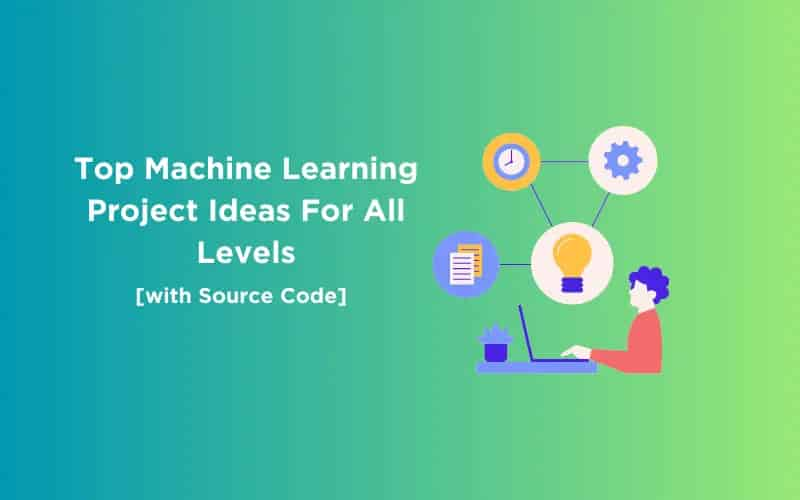
Top 15 Machine Learning Project Ideas For All Levels [With Source Code]
Oct 22, 2025 8 Min Read 21152 Views
(Last Updated)
We all know by now that AI and ML are taking over not just tech but all industries and companies actively seek employees with machine learning skills. And I’m sure you’ve ventured here in hopes of starting your ML journey by building a project for your portfolio.
Machine learning projects are a great way to get hands-on experience and build your portfolio. These projects help you develop problem-solving skills while learning continuously. On top of that, they help you understand real-life applications such as energy consumption prediction, credit card approval systems, and wine quality classification.
We have put together the top 15 machine learning projects that come with source code on GitHub. The projects range from simple Python implementations to complex MLOps deployments. Each project explanation uses simple language to help you build skills, whatever your current expertise level might be.
Table of contents
- Beginner-Level Machine Learning Projects
- 1) Iris Flower Classification
- 2) House Price Prediction
- 3) Sales Forecasting for Retail Store
- 4) Loan Approval Prediction
- 5) Customer Churn Prediction
- Intermediate-Level Machine Learning Projects
- 1) Sentiment Analysis on Tweets
- 2) Music Recommendation System
- 3) Fake News Detection
- 4) Image Classification with CNN
- 5) Stock Price Prediction
- Advanced-Level Machine Learning Projects
- 1) Resume Screening with NLP
- 2) Chatbot for Customer Support
- 3) Face Detection with OpenCV
- 4) Speech Emotion Recognition
- 5) Autonomous Vehicle Simulation
- Concluding Thoughts…
- FAQs
- Q1. What are some good machine learning projects for beginners?
- Q2. How can I improve my skills through machine learning projects?
- Q3. What technologies are commonly used in machine learning projects?
- Q4. How important is practical experience in machine learning?
Beginner-Level Machine Learning Projects
Learning the basics of machine learning is just the start. You need hands-on project experience to improve your skills. These starter projects will help you build strong foundations and put core concepts to work in ground applications.
1) Iris Flower Classification
The Iris Flower Classification project is the “Hello World” of machine learning. It’s perfect for your first hands-on experience. You’ll learn to tell apart three iris flower species (Setosa, Versicolor, and Virginica) by looking at their sepals and petals. Let’s get right into it!
Project Duration: 2–3 days (ideal for beginners exploring their first machine learning project)
Technologies Used:
- Python
- Scikit-learn
- Pandas
- NumPy
- Matplotlib / Seaborn (for data visualization)
- Jupyter Notebook
Key Features:
- This project uses a clean, labeled dataset with no missing values
- Demonstrates multiclass classification with three target classes
- Enables comparison of multiple classification models
- Makes it easy to visualize data distribution and decision boundaries
Source Code GitHub Link to Project: Iris Flower Classification
2) House Price Prediction
House Price Prediction is a classic regression-based machine learning project where your goal is to build a model that accurately predicts real estate prices based on various features such as location, area, number of bedrooms, and amenities. This project mirrors a real-world business case where accurate pricing can greatly influence market dynamics and buyer decisions.
You’ll predict house prices based on things like location, size, and number of rooms.
Project Duration: Approximately 2 to 4 weeks (depending on the complexity and depth of model tuning)
Technologies Used:
- Python
- Pandas & NumPy for data manipulation
- Matplotlib & Seaborn for data visualization
- Scikit-learn for machine learning modeling
- Jupyter Notebook or Google Colab for development
Key Features:
- Data cleaning and preparing the housing dataset for analysis
- Creating useful features (like calculating price per square foot)
- Building models using algorithms like Linear Regression, Decision Tree, and Random Forest
- Checking model performance with common metrics (RMSE, MAE, and R² score)
- Improving model accuracy by adjusting model settings (hyperparameter tuning)
- Visualizing price trends and seeing how different factors affect house prices
Source Code GitHub Link to Project: House Price Prediction
3) Sales Forecasting for Retail Store
Sales forecasting is a crucial part of retail analytics that helps predict future sales based on historical data. In this project, you’ll be using time series analysis and regression models to estimate upcoming demand, enabling store owners to make informed inventory and staffing decisions.
Project Duration: 3 to 5 weeks (depending on dataset size and model complexity)
Technologies Used:
- Python
- Pandas and NumPy for data manipulation
- Scikit-learn for regression models
- Prophet or ARIMA for time series forecasting
- Matplotlib and Seaborn for data visualization
Key Features:
- Forecasts daily/weekly/monthly sales trends
- Handles seasonal and promotional fluctuations
- Provides visual representation of future demand
- Integrates external factors like holidays or events
- Helps optimize inventory and reduce overstock/understock risks
Source Code GitHub Link to Project: Sales Forecasting for Retail Store
4) Loan Approval Prediction
Loan Approval Prediction is a supervised machine learning project that aims to predict whether a loan application will be approved or rejected based on historical data. By training a model on previous loan applicant data, such as income, credit history, employment status, loan amount, and more, you will be building a predictive system that automates and streamlines the decision-making process for financial institutions.
Project Duration: 2 to 4 weeks (depending on your familiarity with data preprocessing and classification algorithms)
Technologies Used:
- Python
- Pandas and NumPy (for data handling)
- Matplotlib/Seaborn (for data visualization)
- Scikit-learn (for modeling)
- Jupyter Notebook or Google Colab (for implementation)
Key Features:
- Predicts loan approval based on applicant data
- Involves data cleaning, feature engineering, and encoding
- Uses classification models like Logistic Regression, Decision Trees, or Random Forests
- Evaluates model performance using metrics like accuracy, precision, and recall
- Can be extended to include model deployment using Flask
Source Code GitHub Link to Project: Loan Approval Prediction
5) Customer Churn Prediction
Customer churn prediction is used to identify which customers are likely to stop using a company’s product or service. This helps businesses proactively retain their customers by understanding patterns and addressing the reasons behind churn. You will predict this based on various parameters. Let’s discuss more about it:
Project Duration: 2 to 4 weeks (including data preprocessing, model building, evaluation, and optional dashboard creation)
Technologies Used:
- Python
- Pandas and NumPy for data manipulation
- Scikit-learn or XGBoost for building classification models
- Matplotlib and Seaborn for data visualization
- Jupyter Notebook or Google Colab
- (Optional) Streamlit or Flask for deployment
Key Features:
- Uses real-world customer data (e.g., telecom or subscription services)
- Applies classification models like Logistic Regression, Random Forest, or Gradient Boosting
- Identifies top factors contributing to customer churn
- Provides a churn probability score for each customer
- Helps in segmenting customers based on retention risk
Source Code GitHub Link to Project: Customer Churn Prediction
Intermediate-Level Machine Learning Projects
Machine learning projects at the intermediate level present deeper challenges that build your skills. These projects need more complex data processing, advanced algorithms, and a detailed understanding of model evaluation techniques. Let’s look at five engaging projects that will expand your expertise.
1) Sentiment Analysis on Tweets
Sentiment analysis automatically classifies text data based on emotional tone or polarity. Companies use this technique with tweets to understand their customers’ feelings about products and services in real-time.
This project involves analyzing tweets to determine the sentiment behind them—whether they express a positive, negative, or neutral opinion. You will be using Natural Language Processing (NLP) techniques to classify text data, which can be applied to real-time data streams from Twitter.
Project Duration: 2 to 3 weeks (including dataset collection, preprocessing, model training, and testing)
Technologies Used:
- Python
- Tweepy (for accessing Twitter API)
- Natural Language Toolkit (NLTK) or spaCy
- Scikit-learn
- Pandas & NumPy
- Jupyter Notebook
Key Features:
- Real-time tweet extraction using Twitter API
- Preprocessing of text data (removal of stop words, stemming, etc.)
- Feature extraction using TF-IDF or Bag of Words
- Sentiment classification using machine learning models like Logistic Regression or SVM
- Visualizations of sentiment distribution
- Option to filter tweets by hashtags or keywords
Source Code GitHub Link to Project: Sentiment Analysis on Tweets
2) Music Recommendation System
Music recommendation systems suggest songs based on users’ listening history and individual-specific experiences. Streaming apps like Spotify and YouTube Music use these systems to ensure quality experiences by personalizing content for each user. This project helps you understand collaborative filtering, content-based filtering, and hybrid recommendation systems used in platforms like Spotify and YouTube Music.
Project Duration: 2 to 4 weeks (depending on the complexity and features added)
Technologies Used:
- Python
- Pandas and NumPy
- Scikit-learn or Surprise (for recommendation algorithms)
- Flask or Streamlit (for web app interface)
- Jupyter Notebook for model development
- Dataset: Million Song Dataset, Last.fm Dataset, or Kaggle datasets
Key Features:
- Personalized music recommendations
- User-based and item-based collaborative filtering
- Content-based filtering using song metadata (genre, artist, etc.)
- Hybrid recommendation approach
- Option to input user ID and receive top N music suggestions
- Web-based UI for demo and testing
Source Code GitHub Link to Project: Music Recommendation System
3) Fake News Detection
Fake news detection is a very engaging natural language processing (NLP) project that focuses on classifying news articles as either genuine or fake. With the rise of social media platforms, the rapid spread of misinformation has become a global concern. In this project, you will use machine learning techniques to build a classifier that detects false or misleading news content.
Project Duration: 2 to 4 weeks (depending on data preprocessing and model optimization complexity)
Technologies Used:
- Python
- Scikit-learn
- Natural Language Toolkit (NLTK)
- Pandas and NumPy
- Flask (for web app deployment, optional)
- Jupyter Notebook
Key Features:
- Binary classification of news articles (Real vs Fake)
- Text preprocessing using NLP techniques like stemming, tokenization, and stopword removal
- Use of TF-IDF vectorizer for text feature extraction
- Implementation of various ML algorithms (Logistic Regression, Naive Bayes, Random Forest)
- Evaluation using accuracy, precision, recall, and a confusion matrix
- Optional: Build a simple web interface to input and classify news articles in real-time
Source Code GitHub Link to Project: Fake News Detection
4) Image Classification with CNN
Image Classification using Convolutional Neural Networks (CNNs) is one of the most common and effective applications of deep learning in computer vision. This project involves training a model to classify images into predefined categories, such as cats vs. dogs, digits, vehicles, or fashion items, based on patterns learned from pixel data. It helps learners understand how CNN architectures extract features like edges, shapes, and textures from images.
Project Duration: 2 to 3 weeks (depending on dataset complexity and model performance tuning)
Technologies Used:
- Python
- TensorFlow or PyTorch
- Keras (if using TensorFlow)
- OpenCV (for image preprocessing)
- Jupyter Notebook
- Matplotlib & Seaborn (for visualization)
Key Features:
- Uses Convolutional Neural Networks (CNNs) to automatically extract spatial features from images
- Involves image preprocessing techniques like resizing, normalization, and data augmentation
- Applies training-validation-testing split to evaluate model performance
- Supports multi-class classification, e.g., identifying clothing types from the Fashion MNIST dataset
- Implements real-time prediction on new, unseen images using a trained model
Source Code GitHub Link to Project: Image Classification with CNN
5) Stock Price Prediction
Stock price prediction is one of the most popular applications of machine learning in the financial sector. In this project, you will be analyzing historical stock market data and building predictive models to forecast future stock prices. It will help you develop skills in time series forecasting, data preprocessing, and working with financial data.
Project Duration: 4 to 6 weeks (depending on data preprocessing complexity and model optimization)
Technologies Used:
- Python
- Pandas and NumPy
- Scikit-learn
- Keras or TensorFlow (for deep learning models like LSTM)
- Matplotlib and Seaborn (for data visualization)
Key Features:
- Real-time data fetching using APIs (e.g., Yahoo Finance or Alpha Vantage)
- Data cleaning and normalization for accurate predictions
- Implementation of regression models (Linear Regression, SVR)
- Use of LSTM (Long Short-Term Memory) networks for sequential predictions
- Visualization of historical vs. predicted stock prices
Source Code GitHub Link to Project: Stock Price Prediction
Advanced-Level Machine Learning Projects
Want to push your skills to the next level? Advanced machine learning projects need deeper technical expertise and show you know how to solve complex ground problems. These projects combine multiple technologies and prove you’re ready for professional roles in AI and machine learning.
1) Resume Screening with NLP
Going through hundreds of resumes by hand takes too much time. Resume screening with Natural Language Processing (NLP) makes this process automatic, which helps companies find the right candidates faster and more accurately. By leveraging NLP techniques, in this project you will extract relevant information from resumes, such as skills, experience, education, and keywords, to compare them against job descriptions.
Project Duration: 4-6 weeks (depending on complexity and dataset size)
Technologies Used:
- Python
- NLTK (Natural Language Toolkit)
- SpaCy
- Scikit-learn
- TF-IDF (Term Frequency-Inverse Document Frequency)
- Cosine Similarity
- Pandas
- Jupyter Notebooks
Key Features:
- Resume Parsing: Extract key information like name, skills, experience, education, and contact details from resumes.
- Keyword Matching: Match extracted resume features with job description keywords to rank candidates based on relevance.
- Text Classification: Classify resumes into categories such as “qualified” and “not qualified” using supervised learning models.
- Cosine Similarity: Calculate the similarity between resumes and job descriptions to rank candidates by relevance.
- Data Visualization: Use libraries like Matplotlib or Seaborn to visualize the ranking of candidates or performance metrics.
- Automated Filtering: Create a system that automatically filters resumes based on specific job requirements.
Source Code GitHub Link to Project: Resume Screening with NLP
2) Chatbot for Customer Support
A chatbot designed for customer support automates interactions with customers by providing instant responses to frequently asked questions, resolving common issues, and guiding users through troubleshooting steps. In this project, you will be able to create a chatbot that simulates real-world customer service operations and demonstrates how machine learning can streamline customer support workflows.
Project Duration:
- Approximately 4-6 weeks for building the basic version
- Can be extended further based on additional features like natural language processing (NLP) or integration with other tools.
Technologies Used:
- Python
- Natural Language Processing (NLP) libraries (such as NLTK or spaCy)
- Machine Learning Algorithms (e.g., Naive Bayes, Decision Trees, or deep learning models)
- Chatbot Frameworks (like Rasa, ChatterBot, or Dialogflow)
- Flask or Django for backend integration
- APIs for data exchange (optional for advanced implementations)
Key Features:
- Instant Query Handling: Ability to provide real-time responses to customer queries.
- FAQ Support: Automatic recognition and response to frequently asked questions (FAQs).
- User Authentication (Optional): Integration of user authentication to provide personalized support.
- Multi-language Support (Advanced): Ability to handle queries in multiple languages (with language detection).
- Integration with Backend Systems (Advanced): Can be integrated with CRM or databases to fetch customer-specific data for better service.
- Escalation to Human Support: When necessary, the bot can escalate the issue to a human representative for more complex queries.
- Learning from Interactions: The chatbot can improve over time by learning from past interactions and feedback, improving its response accuracy.
Source Code GitHub Link to Project: Chatbot for Customer Support
3) Face Detection with OpenCV
Face Detection focuses on identifying and locating human faces within images or video frames. Using OpenCV, an open-source computer vision library, this project applies techniques such as Haar cascades and deep learning models to detect faces in real-time. It serves as an excellent starting point for those interested in computer vision and image processing.
Project Duration: 2 to 3 weeks (for beginners)
Technologies Used:
- OpenCV: A powerful library for image processing and computer vision tasks.
- Python: The programming language for implementing the project.
- Haar Cascade Classifier: A machine learning object detection algorithm used for face detection.
- NumPy: For numerical operations and image array manipulations.
Key Features:
- Real-Time Face Detection: Detects faces from images or live video feeds in real-time.
- Haar Cascade Classifier: Uses pre-trained models to efficiently identify faces in images.
- Face Recognition Integration: Can be extended to integrate with face recognition models for further analysis.
- Multiple Face Detection: Capable of detecting multiple faces simultaneously in an image.
- Video Feed Handling: Works with webcam input or video files, making it applicable to real-world use cases.
Source Code GitHub Link to Project: Face Detection with OpenCV
4) Speech Emotion Recognition
Speech Emotion Recognition (SER) is a machine learning project that detects emotions in human speech. By analyzing audio signals, the model can classify emotions such as happiness, sadness, anger, surprise, or fear. This project typically requires you to extract features from audio files and train a classifier to detect emotions based on the speech’s tone, pitch, and cadence.
Project Duration: 4-6 weeks (depending on your skill set and practice)
Technologies Used:
- Python
- Librosa (for audio feature extraction)
- TensorFlow / Keras (for building neural networks)
- Scikit-learn (for implementing machine learning models)
- OpenSMILE (for feature extraction in audio data)
- Jupyter Notebooks (for project development and experimentation)
Key Features:
- Audio Preprocessing: Includes noise reduction, framing, and segmentation of audio signals to make them suitable for emotion detection.
- Feature Extraction: Extraction of features like Mel-frequency cepstral coefficients (MFCC), Chroma, Mel-spectrogram, and Zero Crossing Rate that are essential for emotion detection.
- Emotion Classification: Classification of emotions based on extracted features using machine learning algorithms such as Support Vector Machines (SVM), Random Forest, or deep learning models like Convolutional Neural Networks (CNN).
- Model Evaluation: Evaluation of model performance using metrics like accuracy, confusion matrix, precision, recall, and F1-score to ensure the model’s effectiveness.
- Real-time Emotion Recognition: With proper hardware and optimization, the model can be implemented for real-time speech emotion recognition, useful for applications in customer support, mental health analysis, and virtual assistants.
Source Code GitHub Link to Project: Speech Emotion Recognition
5) Autonomous Vehicle Simulation
Autonomous Vehicle Simulation is an advanced-level machine learning project where you simulate the behavior of self-driving cars in a virtual environment (It was also my final year project, and is a pretty unique one for final year students). The aim is to train a vehicle to make decisions in real-time, such as steering, braking, and accelerating, using sensor data, computer vision, and reinforcement learning techniques.
Project Duration: 4 to 6 weeks (depending on familiarity with reinforcement learning and simulation environments)
Technologies Used:
- Python
- CARLA (Car Learning to Act) simulator
- OpenAI Gym
- TensorFlow or PyTorch
- Reinforcement Learning (Deep Q-Learning, PPO, etc.)
- OpenCV (for image preprocessing)
Key Features:
- Real-time vehicle control in a simulated environment
- Lane detection and path planning
- Obstacle detection and avoidance
- Sensor fusion (LiDAR, cameras, and radar)
- Traffic signal and sign recognition
- End-to-end model training using reinforcement learning
Source Code GitHub Link to Project: Autonomous Vehicle Simulation
Want to build projects like these? Then refer to HCL GUVI’s Advanced AI & Machine Learning Course that offers industry-relevant training with hands-on projects, covering key ML algorithms, deep learning, and real-world applications. Learners build deployable machine learning projects under expert mentorship, earning a recognized certification to boost their career prospects.
Concluding Thoughts…
As we’ve discussed, machine learning projects are great stepping stones to become skilled at this fast-growing field. You’ve seen how projects progress from simple classifications like the Iris dataset to complex implementations such as autonomous vehicle simulations. Each project builds on previous skills and introduces new concepts and challenges.
Your growth as a machine learning professional mirrors the progression from beginner to advanced projects. Employers value ground experience more than theoretical knowledge.
So, pick a project matching your skill level, start coding, and watch your capabilities grow with each implementation.
FAQs
Q1. What are some good machine learning projects for beginners?
For beginners, projects like Iris Flower Classification, House Price Prediction, and Customer Churn Prediction are excellent starting points. These projects introduce fundamental concepts and techniques while working with manageable datasets.
Q2. How can I improve my skills through machine learning projects?
Working on progressively challenging projects helps improve your skills. Start with beginner projects to grasp basics, then move to intermediate projects like Sentiment Analysis or Music Recommendation Systems. Advanced projects like Resume Screening with NLP or Autonomous Vehicle Simulation will further enhance your expertise.
Q3. What technologies are commonly used in machine learning projects?
Python is the primary programming language for most machine learning projects. Common libraries include scikit-learn for traditional ML algorithms, TensorFlow or PyTorch for deep learning, and NLTK or spaCy for natural language processing tasks. For data manipulation, pandas is widely used.
Q4. How important is practical experience in machine learning?
Practical experience through projects is crucial in machine learning. Employers highly value hands-on experience, as it demonstrates your ability to apply theoretical knowledge to real-world problems. Projects also help you understand the entire machine learning workflow, from data preprocessing to model deployment.
Q1. What are some good machine learning projects for beginners?
For beginners, projects like Iris Flower Classification, House Price Prediction, and Customer Churn Prediction are excellent starting points. These projects introduce fundamental concepts and techniques while working with manageable datasets.
Q2. How can I improve my skills through machine learning projects?
Working on progressively challenging projects helps improve your skills. Start with beginner projects to grasp basics, then move to intermediate projects like Sentiment Analysis or Music Recommendation Systems. Advanced projects like Resume Screening with NLP or Autonomous Vehicle Simulation will further enhance your expertise.
Q3. What technologies are commonly used in machine learning projects?
Python is the primary programming language for most machine learning projects. Common libraries include scikit-learn for traditional ML algorithms, TensorFlow or PyTorch for deep learning, and NLTK or spaCy for natural language processing tasks. For data manipulation, pandas is widely used.
Q4. How important is practical experience in machine learning?
Practical experience through projects is crucial in machine learning. Employers highly value hands-on experience, as it demonstrates your ability to apply theoretical knowledge to real-world problems. Projects also help you understand the entire machine learning workflow, from data preprocessing to model deployment.


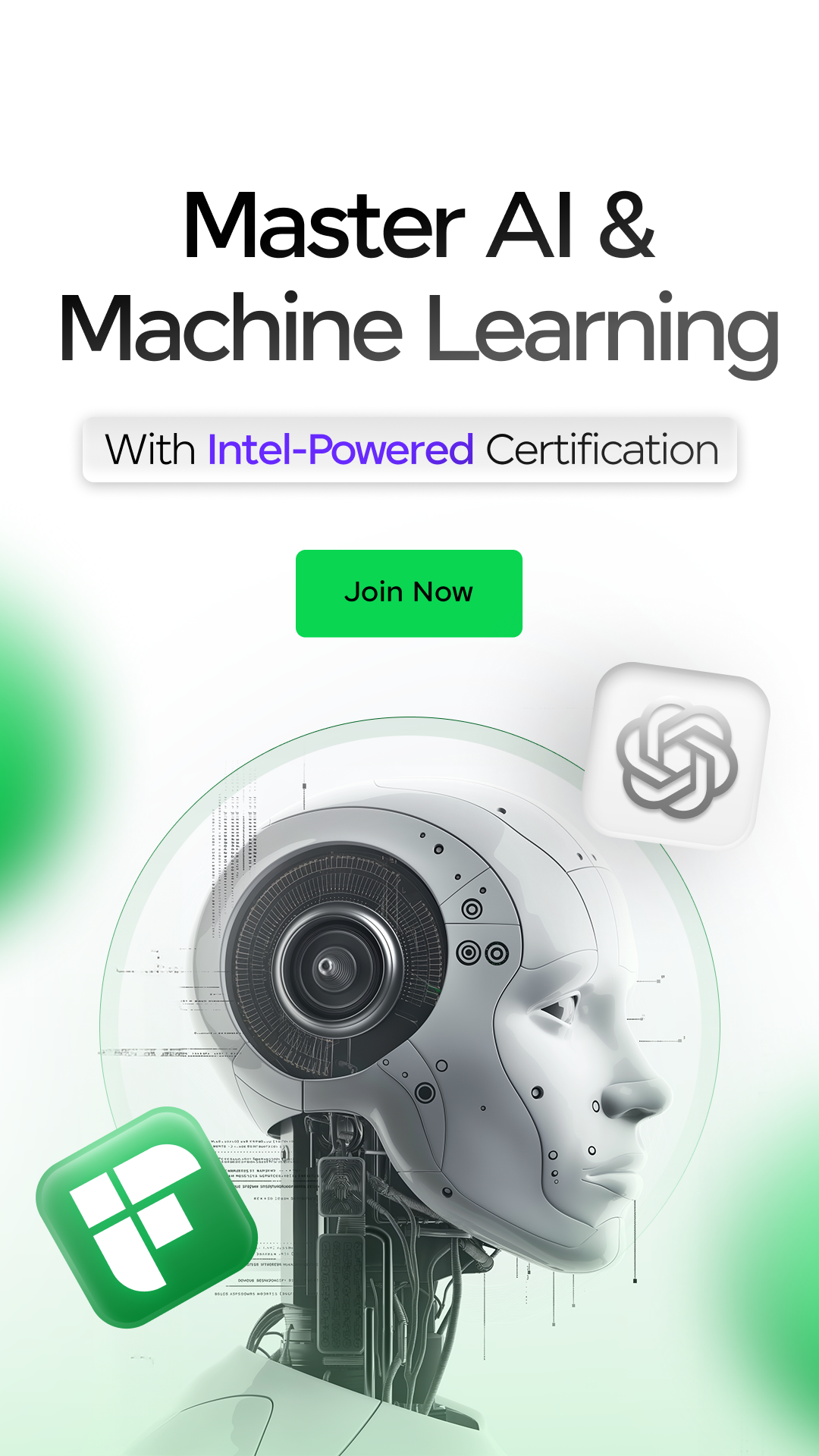
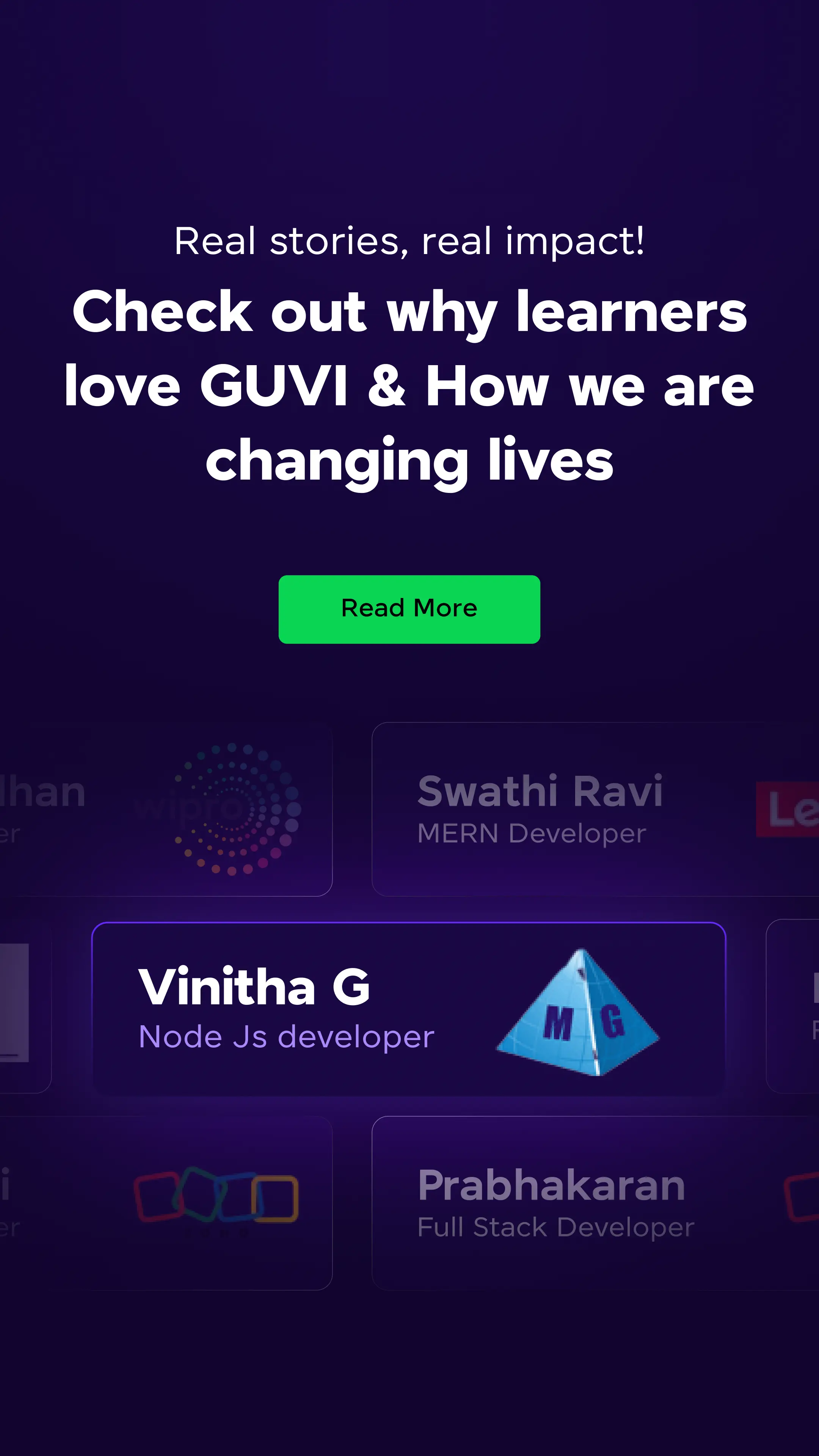















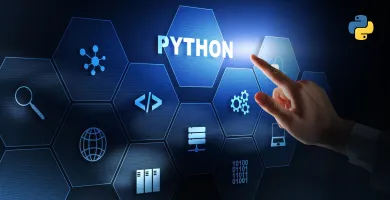



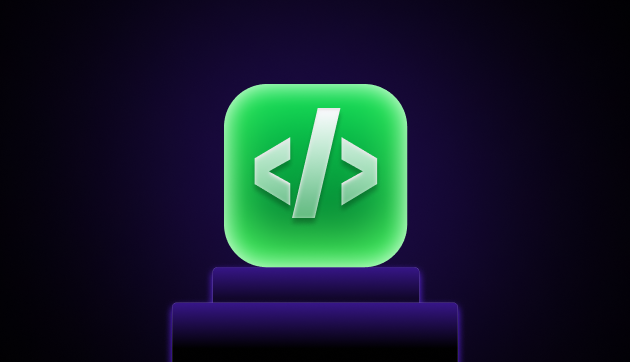
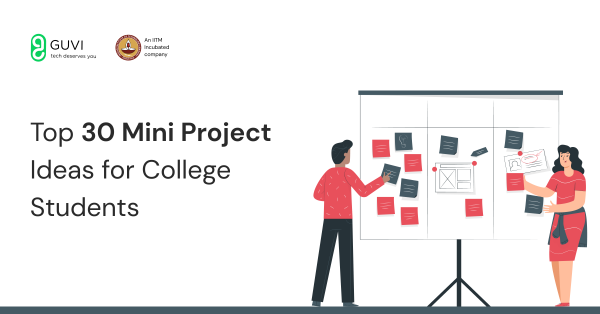




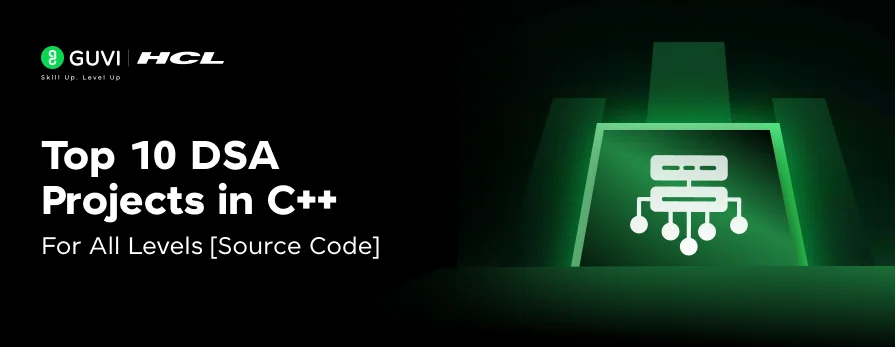

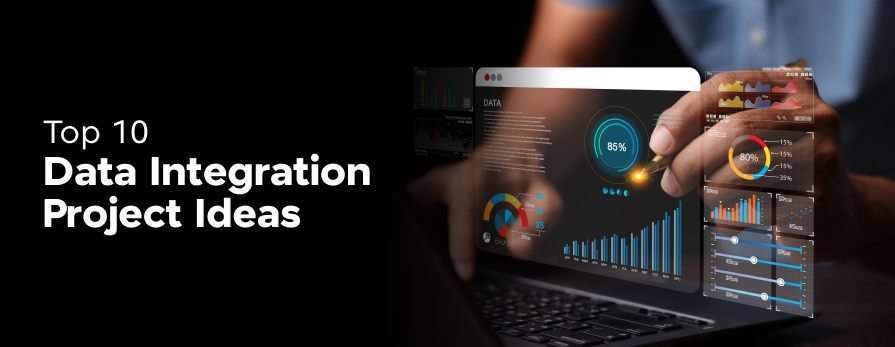




Did you enjoy this article?